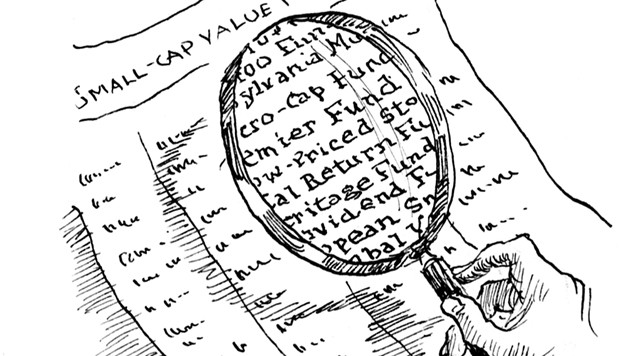Mutual Funds Performance Measuring Fund Performance
Post on: 19 Май, 2015 No Comment

The Truth About Mutual Funds
How to Measure a Mutual Fund’s Performance
The world of mutual fund performance is complex and daunting. Advertisements in newspapers talk about five-star funds. Banner ads talk about the NUMBER ONE FUND in America and histories of past performance refer to returns of 38.8% over the last six months. If one were to pay attention to all of the talking heads on television, all the magazines that promise a list of great funds for the upcoming year, and worst of all, the advertisements in the print and television media, one would be convinced that there are hundreds of funds out there that can tout great performance.
This simply isn’t the case.
Although past performance is certainly not an indication of future results, there are some clues to be found about the quality of a fund by correctly measuring its past performance. Usually, what will be discerned through a careful study of past performance is that not many mutual funds actually deliver anything close to what their advertisements claim.
When looking at a mutual fund’s past performance, a good and necessary step is to identify its Morningstar style box. Morningstar has broken down the world of domestic mutual funds into small-, medium-, and large-cap funds and by objective — growth, value, or blend. (Click the link above for more details on any of these terms.)
The Morningstar style box looks like a tic-tac-toe board, as such:
Once you know which style box a fund is in, you can compare it with the other mutual funds that are similarly classified, and in many cases to a relevant index fund.
Going through this exercise and comparing a fund’s returns over three years, five years, and ten years with the appropriate market index and other similarly styled funds will be much more useful than simply comparing a fund’s returns to the S&P 500 or seeing how many stars it has. While the S&P 500 is a very useful benchmark for the market as a whole, you will get a much better idea about a specific fund’s relative merits by comparing it with its style box competition than you will by comparing it with the market as a whole or the S&P 500 in particular.
In 1998 for example, approximately 90% of all mutual funds lost to the returns of the S&P 500. S&P 500 index funds are categorized by Morningstar as large-cap blend funds, meaning that the S&P 500 is dominated by neither growth stocks nor value stocks.
While 90% of all mutual funds trailed the S&P, the majority of funds that were categorized as large-cap growth funds beat the S&P in 1998. Does this mean that large-cap growth fund managers were particularly good at their jobs? No. While actively managed large-cap growth funds averaged a return of 36% for 1998, beating the S&P by about 8%, the Vanguard Large-Cap Growth Index Fund was up over 42% for the year. So if you see any advertisements for mutual funds showing that the fund beat the S&P over the course of 1998, find out whether it’s categorized as a large-cap growth fund. If it is, don’t be too impressed — it should have soundly beaten the returns of the S&P 500 Index.
Vanguard now provides index funds that match seven of the nine style boxes (Vanguard does not have specific indices for mid-cap growth or mid-cap value), and these funds are very good measuring sticks for the rest of the actively managed fund world.
There are many fine places on the Internet where you can quickly ascertain the relative performance of any mutual fund for which you are interested in measuring the performance. Go to Morningstar.com and look up the fund by either entering the name of the fund or its ticker symbol if you know it. Morningstar will then show you a healthy selection of useful data on your fund, including its style box categorization, its performance year-by-year compared to the S&P 500, and also to a more appropriate index, such as the Wilshire 4500 if it is not a large-cap fund.
You can also measure your fund, once you know its style box categorization, at SmartMoney: Mutual Fund Snapshots. SmartMoney’s site has lots of pretty colors and an interesting function that allows you to compare funds with other funds for one-, three-, and five-year periods. To get a good glimpse of how the funds in your 401(k) plan are doing compared to the appropriate index fund, here are the places to compare your funds to Vanguard’s style-box-specific index funds:
- Small-cap funds. NAESX (Russell 2000 Stock Index)

Vanguard has recently started a mid-cap index fund (VIMSX), a small-cap value fund (VISVX), and a small-cap growth fund (VISGX). However, none of these funds is old enough to provide meaningful information. If you are looking to assess mid-cap funds, it is probably best to compare them to the California Investment Trust S&P Midcap Fund (SPMIX). If you are looking to assess the quality of small-cap value funds or small-cap growth funds, at the present it is probably best to compare your fund with the small-cap blend index funds, such as Vanguard’s Small Cap Index Fund (NAESX).
Going through the process of comparing mutual funds’ returns to an appropriate index or index fund should reveal to you that the track record of most managed mutual funds is terribly unimpressive. Some, of course, will beat their appropriate indices or index funds, but it is a very, very rare fund indeed that consistently outperforms the market.














